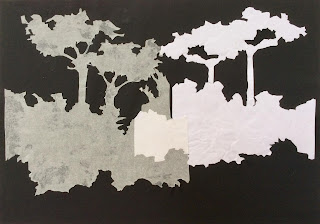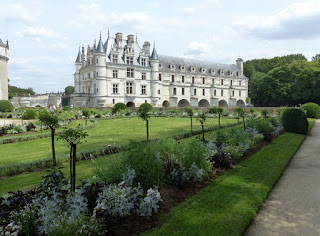Greetings to all who follow my blog regularly and to those who visit only occasionally. It is always a pleasure and a source of amazement that you seek me out from all corners of the world. What an extraordinary institution blogging is.
This year, I'm posting a series of winter photographs of Scotland to bring good wishes. My husband and I took them around Braemar during a visit to Aberdeenshire at the end of October 2018 during two days of crisp winter weather following a freak early snowfall.
I hope you enjoy this glimpse of the homeland of my husband's family in the Dee Valley west of Aberdeen. The cottage we stay in has been lived in full time by members of his family or, more recently, has been at the heart of holidays for us all for almost 100 years.
It is a welcome focus in a world where we move around and live apart from one another most of the time. Over the 46 years of our marriage, we have spent so much happy family time here, with our children and grand children and with friends, swimming in rivers, walking, talking and climbing mountains, exploring the many castles and the history of the area. We have many traditional places that have to be visited each time we go. The area is part of the fabric of our lives.
Yet, although we visit several times each year between March and early November, till this visit, I had never seen it covered in a blanket of snow. It was a new pleasure for me.
My husband and I created these cards together. Working in this way has become traditional for us at Christmas. We both took photographs during our visit and chose three each for the cards. They were then adjusted slightly in Photoshop (I couldn't restrain myself), printed out and mounted with a greeting.
The photos we included range from bright and sunny to cloudy, bleak and moody and perhaps even threatening. I'm not sure which I prefer or which sticks most in my mind as I write. Each gives a particular flavour of the place. The small selection is, perhaps, a sample of what makes this area so special to us.
I hope that you spend Christmas and the New Year in whatever way you choose, with family, friends or alone, and that it brings you joy and companionship if you want it.
Good wishes and thanks to you all.
This year, I'm posting a series of winter photographs of Scotland to bring good wishes. My husband and I took them around Braemar during a visit to Aberdeenshire at the end of October 2018 during two days of crisp winter weather following a freak early snowfall.
 |  |  |
 |  |  |
It is a welcome focus in a world where we move around and live apart from one another most of the time. Over the 46 years of our marriage, we have spent so much happy family time here, with our children and grand children and with friends, swimming in rivers, walking, talking and climbing mountains, exploring the many castles and the history of the area. We have many traditional places that have to be visited each time we go. The area is part of the fabric of our lives.
Yet, although we visit several times each year between March and early November, till this visit, I had never seen it covered in a blanket of snow. It was a new pleasure for me.
My husband and I created these cards together. Working in this way has become traditional for us at Christmas. We both took photographs during our visit and chose three each for the cards. They were then adjusted slightly in Photoshop (I couldn't restrain myself), printed out and mounted with a greeting.
The photos we included range from bright and sunny to cloudy, bleak and moody and perhaps even threatening. I'm not sure which I prefer or which sticks most in my mind as I write. Each gives a particular flavour of the place. The small selection is, perhaps, a sample of what makes this area so special to us.
I hope that you spend Christmas and the New Year in whatever way you choose, with family, friends or alone, and that it brings you joy and companionship if you want it.
Good wishes and thanks to you all.













































